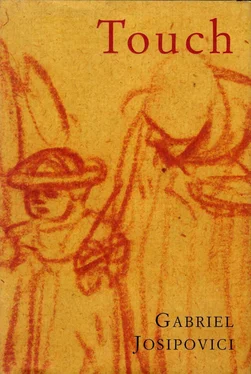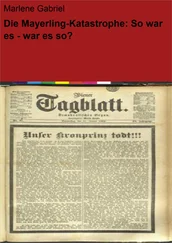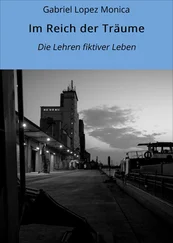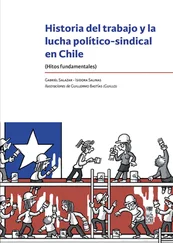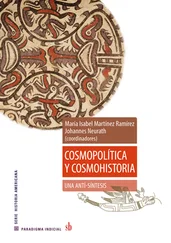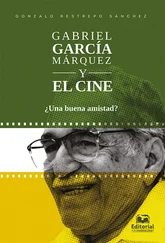Gabriel Josipovici - Touch
Здесь есть возможность читать онлайн «Gabriel Josipovici - Touch» весь текст электронной книги совершенно бесплатно (целиком полную версию без сокращений). В некоторых случаях можно слушать аудио, скачать через торрент в формате fb2 и присутствует краткое содержание. Год выпуска: 1996, ISBN: 1996, Издательство: Yale University Press, Жанр: Современная проза, на английском языке. Описание произведения, (предисловие) а так же отзывы посетителей доступны на портале библиотеки ЛибКат.
- Название:Touch
- Автор:
- Издательство:Yale University Press
- Жанр:
- Год:1996
- ISBN:0300066902
- Рейтинг книги:5 / 5. Голосов: 1
-
Избранное:Добавить в избранное
- Отзывы:
-
Ваша оценка:
- 100
- 1
- 2
- 3
- 4
- 5
Touch: краткое содержание, описание и аннотация
Предлагаем к чтению аннотацию, описание, краткое содержание или предисловие (зависит от того, что написал сам автор книги «Touch»). Если вы не нашли необходимую информацию о книге — напишите в комментариях, мы постараемся отыскать её.
Touch — читать онлайн бесплатно полную книгу (весь текст) целиком
Ниже представлен текст книги, разбитый по страницам. Система сохранения места последней прочитанной страницы, позволяет с удобством читать онлайн бесплатно книгу «Touch», без необходимости каждый раз заново искать на чём Вы остановились. Поставьте закладку, и сможете в любой момент перейти на страницу, на которой закончили чтение.
Интервал:
Закладка:
In his other major poem, Pearl , this extraordinary anonymous fourteenth-century English poet was also concerned with the difficulty of reconciling our system of beliefs with our gut reactions, only this time he deals with it directly rather than through the prism of romance. The protagonist is a bereaved parent who cannot accept, cannot, we would say, come to terms with, the death of his child. He describes her as his ‘precious pearl’, who, he says, slipped through his fingers one summer's day and fell into the earth where she was lost. The little girl appears to him in a dream and, in an extended debate, tries to make him see that she is now happy and fulfilled in Paradise and that he has no reason to grieve. But though he can grasp what she says intellectually he cannot accept the loss to him her death entails. In the end, desperate to join her on the other side of the river which has separated them throughout their conversation, he rushes forward to seize hold of her. But the shock of his contact with the cold water of the river wakes him up. As with Gawain's painful discovery that the Green Knight had known of his cowardice all along, the shock effects a change in his whole being which mere argument had failed to do. Like Gawain in the face of Arthur's injunction to the court to wear identical girdles to his, the bereaved father is now at last able to let his child go, to understand with his whole being and not just his mind that we cannot ever fully comprehend what happens to us or protect ourselves against the blows of fate. And he understands at the same time that we must learn not merely not to resent this fact but actively to celebrate it. The last stanza of the poem, so reminiscent of George Herbert, has the father partaking of the daily ritual of the Mass, where the bread of life is eaten and where the act of participation implies a recognition that life goes on despite the losses we suffer, and that this is itself a good which cannot be questioned:
To pay the Prince other sete saghte
Hit is full ethe to the god Krystyin:
For I haf founded hym, bothe day and naghte,
A God, a Lorde, a frende ful fyin.
Over this hyul this lote I laghte,
For pyty of my perle enclyin,
And sythen to God I hit betaghte
In Krystes dere blessyng and myn,
That in the forme of bred and wyn
The preste uus schewes uch a daye.
He get uus to be hys homly hyne
And precious perles unto his pay.
Amen. Amen.
*The poet is deliberately vague about Gawain's confession, as he is about Arthur's childishness in the first scene; it may be that Gawain does tell the priest about the girdle, but since he makes no effort to restore it to its owner, such a confession is worthless. See John Burrow's excellent discussion in A Reading of Sir Gawain and the Green Knight , p. 200.
15 ‘A Goose which Has Grown in Scotland on a Tree’
In 1638 Georg Christoph Stirm, a German student, wrote a letter home from England in which he described what he saw in the famous house-museum of the horticulturalist, John Tradescant. The letter gives a startling insight not only into the contents of Tradescant's museum but also into the mind of the writer who reports on those objects. ‘In the museum itself,’ writes Stirm,
we saw a salamander, a chameleon, a pelican, a remora, a lanhado from Africa, a white partridge, a goose which has grown in Scotland on a tree, a flying squirrel, another squirrel like a fish, all kinds of bright coloured birds from India, a number of things changed into stone, all kinds of shells, the hand of a mermaid, the hand of a mummy: a very natural wax hand under glass, all kinds of precious stones, coins, a picture wrought in feathers, a small piece of wood from the cross of Christ …, many Turkish and other foreign shoes and boots, a sea-parrot, a toad-fish, an elk's hoof with three claws, a bat as large as a pigeon, a human bone weighing 42lbs., Indian arrows such as are used by the executioners in the West Indies — when a man is condemned to death they lay open his back with them and he dies of it — an instrument used by the Jews in circumcision, some very light wood from Africa, the robe of the King of Virginia …, a passion of Christ carved very daintily on a plumstone, a large magnet stone, a S. Francis in wax under glass, as also a S. Jerome, the Pater Noster of Pope Gregory XV, pipes from the East and West Indies, a stone found in the West Indies in the water, whereon are graven Jesus, Mary and Joseph, a beautiful present from the Duke of Buckingham, which was of gold and diamonds affixed to a feather by which the four elements were signified, Isidor's MSS of de natura hominis , a scourge with which Charles V is said to have scourged himself, a hat band of snake bones …
At first we might think that there is not much difference between this and the lists drawn up by Cromwell's inspectors of the relics harboured by the religious houses of England, such as the coals on which St Lawrence was ‘toasted’, the paring of St Edmund's nails or the boots and penknife of St Thomas; but a moment's reflection will serve to bring out the differences. The Reformers' zeal reduces all the relics to inventory lists, but, as we have seen, it was not out of curiosity that the pilgrims went in search of the nails or the boots, but in order to enter the presence of the holy man. The coals, nails and boots stand for the saint himself, they evoke his presence. The pilgrim, in sixteenth-century England as much as in the countries of the Mediterranean in the late Roman Empire, was still ‘going to a place to meet a person’; the visitor to John Tradescant's museum, on the other hand, was going to satisfy his curiosity and to be filled with wonder at the sheer quantity and variety of objects collected there.
What is so fascinating about Stirm's letter is the way no principle of organisation seems to operate, the way everything is jumbled together and exerts an equal pull on the viewer, a goose which grows on a tree in Scotland and pieces of the True Cross, the robe of the King of Virginia and a Passion carved on a stone. Stirm's only form of taxonomy seems to be the list. Just as the Mona Lisa in the Louvre is, for most visitors, merely ‘Leonardo's masterpiece’, to be wondered at before one passes on, so the elk's hoof, the mermaid's hand or the instrument used by the Jews for circumcision, wrenched from their original contexts, become objects of curiosity and nothing else.
This sense of the sheer abundance of objects in the world, no longer clearly linked to the single unifying story of Creation and Redemption, fuelled by the discovery of the Americas — and, later, of the Pacific and the African interior — is reflected in much of the writing of the period. The enormous lists of Rabelais and Ben Jonson, the overwhelming number of examples of melancholy in Burton's Anatomy of Melancholy , and of quincunxes and even ‘vulgar errors’ in Thomas Browne — these strike the reader as expressions of delighted exuberance at the sheer variety and richness of the world, but also as a kind of panic at the lack of any real or underlying order. And the attitude is not confined to the sixteenth and seventeenth centuries. Nicholas Thomas, in a fascinating article on Cook's Pacific voyages, describes, for example, a set of plates of curiosities in the British Museum, John and Andrew van Rymsdyck's Museum Britannicum (1788):
The plates included Taylor-birds and wasps' nests; the Oculus Mundi, or eye of the world, a Chinese pebble that becomes transparent in water; a penknife with a gold tip, employed in an alchemist's sleight-of-hand; a brick from the Tower of Babel; ‘A very curious Coral , modeled by Nature, in the form of a Hand or Glove’; Governor Pitt's brilliant diamond; and some weapons, including the Flagello, an unlawful instrument said to have been extensively used ‘in the Irish massacre of King Charles 's time; though far be it from me to advance any thing that is not true’.
Читать дальшеИнтервал:
Закладка:
Похожие книги на «Touch»
Представляем Вашему вниманию похожие книги на «Touch» списком для выбора. Мы отобрали схожую по названию и смыслу литературу в надежде предоставить читателям больше вариантов отыскать новые, интересные, ещё непрочитанные произведения.
Обсуждение, отзывы о книге «Touch» и просто собственные мнения читателей. Оставьте ваши комментарии, напишите, что Вы думаете о произведении, его смысле или главных героях. Укажите что конкретно понравилось, а что нет, и почему Вы так считаете.
